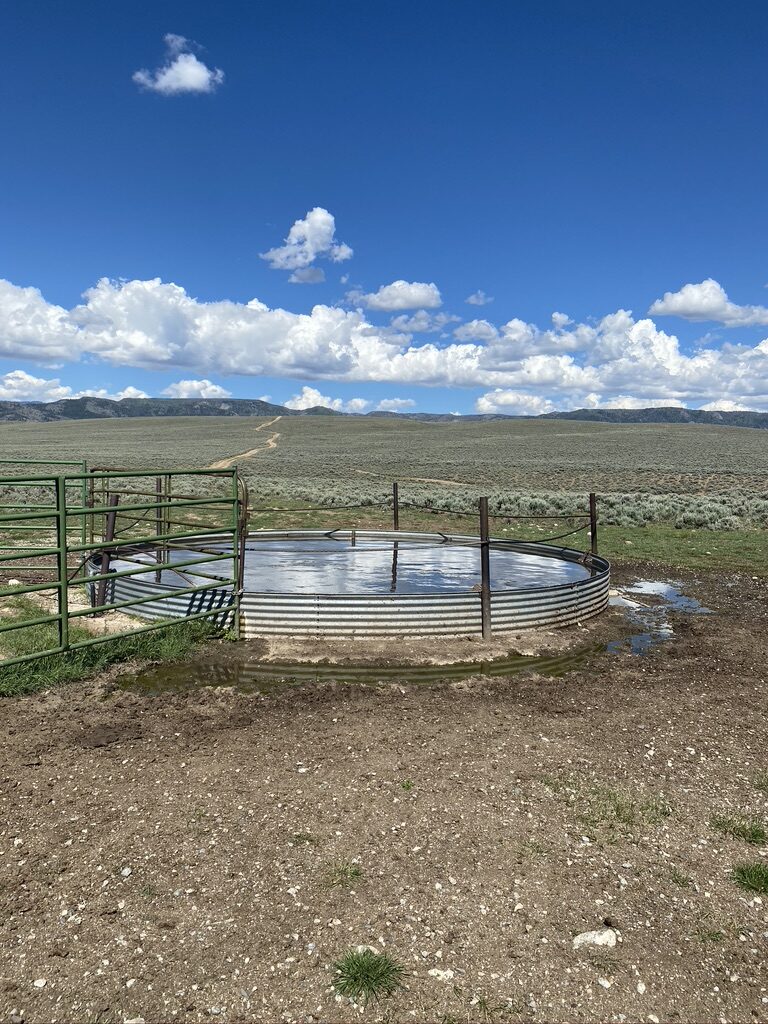During the month of August, I was unfortunate enough to be impacted by two extreme weather events associated with climate change. In Wyoming, multiple field days were cut short due to hazardous air quality resulting from the ongoing wildfires in California and Oregon. While 2020 saw the second highest acreage burned since 1960 (the highest being 2015), 2021’s fire season started a month earlier as a consequence of continued drought and the June heatwave. This means it is on track to be another record setting fire season in the West. On the opposite end of the extreme weather spectrum, I was caught in a flash flood in West Palm Beach, Florida while visiting family for the weekend. Before this I had always wondered how flash floods lead to such a loss of life, but as my cousin and I stalled out in a small puddle and the water rose to window level in under thirty minutes I realized how scary deluge precipitation can be. Luckily, I made it through the summer with minimal impacts to my person or my property, my cousin’s car was totaled though. I thought it would be a few decades before floods and fires were commonplace, but the endless news stories of fires, hurricanes, flash floods, droughts, and heatwaves are evidence to the contrary.
Living through this summer where hurricanes have battered the east coast, fires rage in the west, deluge precipitation is commonplace and many parts of the world have hit record temperatures has personally solidified the importance of climate change research. The weather and natural disasters this summer are extreme examples of the changes in climate that my research focuses on in dryland plant communities. Unlike flash floods and wildfires that have immediate impacts to the people caught in them, my research focuses on the long-term effects of shifting precipitation patterns and heatwaves, which while less alarming immediately, are globally detrimental. These shifts, particularly in water limited systems, will likely lead to large scale changes in the distribution of vegetation types at an unprecedented rate compared to previous global climate shifts. Unfortunately, personal experience with climate-related natural disaster tends to be the most motivating while the impacts of climate change in my study system, big sagebrush ecosystems, are indirect and often difficult to visualize. Despite the subtlety, local plant community shifts will impact global agricultural infrastructures as well as the wellbeing and economic livelihoods of many people when considered in aggregate.

In dryland plant communities, water is the limiting resource. This means a large portion of the American west including the central plains, the three major deserts (Chihuahuan, Sonoran and Mojave) and the sagebrush steppe are dependent on the timing and frequency of precipitation. Plant functional types capitalize on water that falls at different times of the year giving rise to unique plant communities in areas with similar overall precipitation with varying distributions. In the upper green river basin of southwest Wyoming, winter precipitation that falls predominantly as snow accounts for a majority of the annual total. This precipitation is more likely to flow into deeper soil layers before evaporating, acting as an insulating layer for understory perennials through the freezing months. The basin experiences a brief rainy season in the spring/early summer that benefits cool season perennial grasses and boosts productivity for livestock. This precipitation regime supports one of the largest green wave migrations left on the planet for both pronghorn and mule deer.
Increasing global temperatures will lead to changes in average precipitation but the more consequential impact is shifting the annual distribution of precipitation. This shift has the potential to influence which plant functional types benefit from a particular rain or snow event. In the basin, predicted changes in precipitation patterns and temperatures are likely to extend the growing season by decreasing precipitation that falls as snow, and increasing spring/early summer precipitation. This means that rather than having a large amount of water available to sagebrush at deeper soil layers, water will become more available to grasses in the surface soil layers benefiting grasses and smaller forbs, with potentially detrimental effects to the dominant big sagebrush.
Complicating this shift is the presence of multiple herbivore species both native and domestic. Wildlife and livestock grazing exist in a feedback loop with plant community productivity and weather. This relationship has the potential to either mitigate or exacerbate the impacts of climate change on biodiversity and productivity in the region. Cattle are general grazers consuming most understory species with a particular focus on perennial bunchgrass species. Pronghorn and the other large ungulates such as mule deer are browsers whose selective diet includes many forbs. As a result, the number of pronghorn or livestock in a given area can act as a control on the recovery or dominance of certain understory species that can capitalize on an extended growing season and increased production. Consequently, the degree and type of grazing will dictate the future abilities of big sagebrush ecosystems to withstand shifting precipitation patterns and increased drought conditions. Returning to our feedback loop, these herbivore influenced communities and their resilience and resistance to shifting climates will influence the number of livestock and wildlife they are able to support.

This concept motivated my research this summer, which focuses on the trajectory of plant communities under an extended growing season. As a multi-year experiment, much of the summer has been spent setting up grazing exclosures, installing wildlife cameras, digging holes for soil moisture sensors, and surveying the initial plant community. Think lots of long days pounding fence posts into hard baked soils, moving unwieldy hog fence panels and using a lot of fencing wire in very little shade under a hot dry sun. Utilizing watering points for cattle that create a natural grazing gradient, I have set up fenced herbivore removal plots in a design that combines variable grazing pressure and precipitation addition to simulate an extended growing season. For the next three years I’ll be tracking changes in the composition of the understory species and the growth of sagebrush. The motivation for this work comes from a hope that we, the collective American consumer, want to optimize sustainable beef production and protect some of the last remaining large mammal migrations. This project will contribute to our understanding of plant community dynamics in the upper green river basin under a shifting climate, helping to inform policy and management practices in the West and in drylands more broadly.

Scott Carpenter, Western Resource Fellow | Scott is a doctoral student in the School of the Environment at Yale University where he researches the impact of changing precipitation patterns on plant communities in the Intermountain West. Following his undergraduate degree at Princeton University, Scott worked as a project manager for an NSF-funded ecological study at Ol Pejeta conservancy, Kenya’s second largest cattle operation and premier rhino tourism destination. While living in central Kenya Scott developed an interest in mixed-use rangelands, particularly how increasing climate variability influences plant communities and the subsequent consequences for wildlife and livestock. His research in Southwest Wyoming focuses on the impacts of shifting precipitation patterns and increased variability for big sagebrush plant communities through a mix of process-based modeling, field experimentation and survey methods. See what Scott has been up to. | Blog
